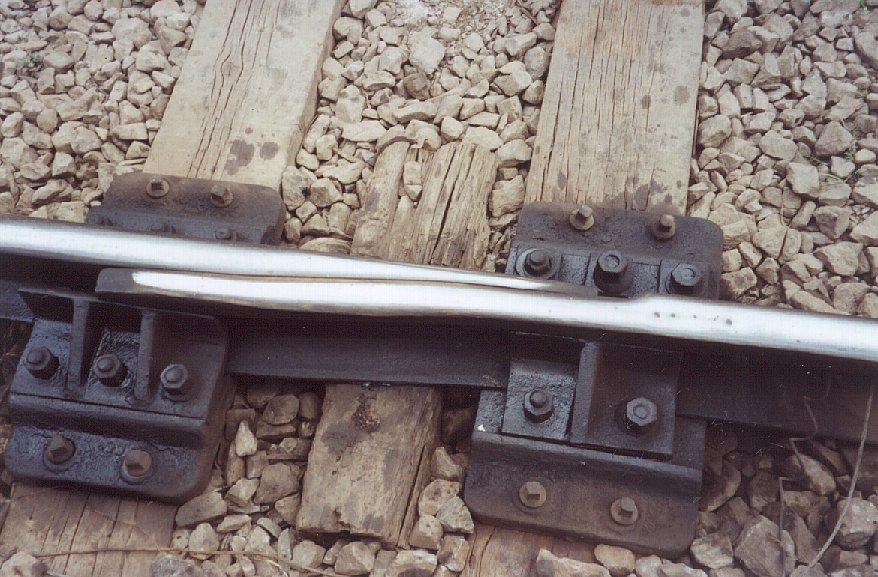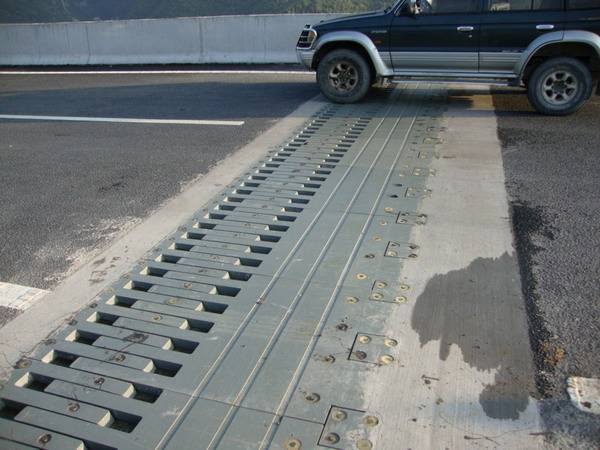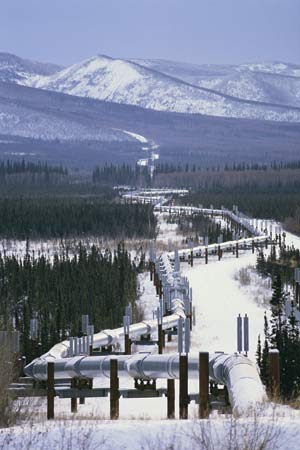Thermal
Expansion
Home
How It
Works
Useful
applications
Engineering
Precautions
Sources
The
expansion of objects is a very important
consideration when designing and building roads,
railroads, pipeline or any other object that is
subject to a large temperature difference. Here are some examples of some
engineering precautions:
Road Expansion
Large bodies of concrete like
highways, airport runways or sidewalks can be
affected by thermal expansion. Catastrophic failure is not a
common occurrence because many factors have to
line up for a road to buckle as badly as shown
in the picture. The amount of damage depends on
the age of the concrete as well as the
temperature and humidity the concrete has been
exposed to (Kerr, 1997). After new concrete is
put in, it shrinks a great deal more to reach
its hardened state than it will expand upon
being heated. This makes it unlikely but still
possible that the buckling will occur as shown
in the picture above.
These expansion issues in concrete can be fixed
by adding joints so that the expanding occurs in
controlled places. This is why sidewalks are made
with joints. The cracks can then be filled
with a rubber or other material that is more
pliable and will not break.
Railroad Expansion Joint
Railroads provide a very good
example of why linear thermal expansion is
important. For a small section of railroad tracks
there will only be a small amount of linear
expansion. This small amount of change is
considerably larger when looking at an entire
length of a route. For example, the Alaska
Railroad that extends from Fairbanks to Seward is
470 miles (756392 meters) long (Alaska Channel,
2015), and the amount that the track could change
is more significant.
Using the linear coefficient of steel as 12.0 *10-6
1/K (Engineering ToolBox, 2015) and a temperature
difference from -60°C to 35°C (Natural Science
Resource Center, 2013) this calculation looks like
this:
(Change
of length) = (Coefficient of linear expansion) *
(Original length) * (Change in Temperature)
(Change
of length) = (12.0 *10-6 1/K) * (756392 m) * (-60°C - 35°C) = 816.9 m
A
difference of 816.9 meters is an extremely large change.  This may
lead to buckles in the track which can be harmful
to the trains and their passengers. Thermal
expansion is the reason railroad expansion joints
are used. This may
lead to buckles in the track which can be harmful
to the trains and their passengers. Thermal
expansion is the reason railroad expansion joints
are used.
These joints allow for the track
to expand and contract and keep the track from
deforming. This is one of the many types of
railroad expansion joints used today.
Bridge
Expansion Joint
Bridges also have
preventative measures against expansion. Bridge expansion joints
allow the bridge to move and expand without
causing harm to the bridge as it warms and cools. This allows for the bridge to
expand and contract as  needed
through the day. needed
through the day.
The Mackinac Bridge in
Michigan is 5 miles long and needed 27 feet of expansion which was
provided through a series of expansion joints
(Historic Bridges, 2015). The picture at the left
shows an example of an expansion joint. It is made
of interlocking combs that allow vehicles to
travel over without a large gap even when it has
shrunk during the coolest temperature.
Pipeline Design
Pipelines have several features
that prevent destruction from thermal  expansion. They can
be designed in a zig-zag pattern like the
Trans-Alaska Pipeline shown at left so that the
expansion of the pipeline won't buckle the pipe
(Natural Science Resource Center, 2013). They also
are made with expansion joints so that the pipe
will absorb most of the expansion but still allow
for the flow of oil. These joints allow for
movement due to thermal changes of the environment
as well as the temperature of the oil. Pipelines
must be carefully constructed as they pose a
serious environmental concern if any spills occur. expansion. They can
be designed in a zig-zag pattern like the
Trans-Alaska Pipeline shown at left so that the
expansion of the pipeline won't buckle the pipe
(Natural Science Resource Center, 2013). They also
are made with expansion joints so that the pipe
will absorb most of the expansion but still allow
for the flow of oil. These joints allow for
movement due to thermal changes of the environment
as well as the temperature of the oil. Pipelines
must be carefully constructed as they pose a
serious environmental concern if any spills occur.
|
This may lead to buckles in the track which can be harmful to the trains and their passengers. Thermal expansion is the reason railroad expansion joints are used.
needed through the day.
expansion. They can be designed in a zig-zag pattern like the Trans-Alaska Pipeline shown at left so that the expansion of the pipeline won't buckle the pipe (Natural Science Resource Center, 2013). They also are made with expansion joints so that the pipe will absorb most of the expansion but still allow for the flow of oil. These joints allow for movement due to thermal changes of the environment as well as the temperature of the oil. Pipelines must be carefully constructed as they pose a serious environmental concern if any spills occur.
